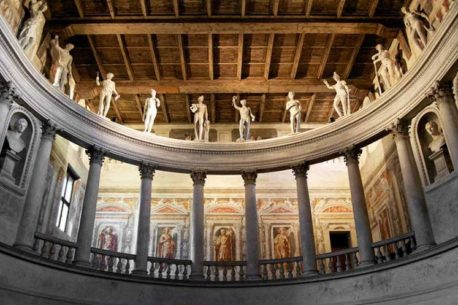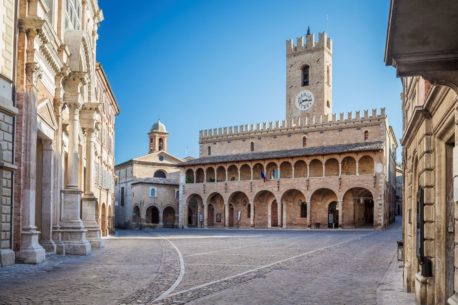
The Jewish history of the city dates back to the 13th century. The Jewish Community lived a relatively peaceful life, with most people specialising in trading and money lending. The transition of the city to the Republic of Venice in 1405, brought in a period of progressively worsened living conditions. Nevertheless, Jews were still allowed to study at the city’s prestigious university, even though they had to pay higher fees than the Christian students. Around those years, Padua became an important hub for Jewish studies, and was host to individuals of importance, some of which are buried in the 2 surviving cemeteries.
The creation of the ghetto dates back to 1603. The area chosen for it is the one close to Piazza delle Erbe (square of the herbs, the main square in the old part of Padua, where until nowadays the market has been taking place). The area was chosen because it was already densely populated with Jewish families and because many of their shops and even two synagogues were located there. Guarded doorways separated the ghetto from the rest of the city at night, since Jews were only allowed to leave during the day, when they had to present a “Jewish sign” (a coloured piece of fabric on their clothes, or a particular kind of hat). Since the area of the ghetto, like in any other city where ghettos were established, was quite cramped building spaces had to be developed vertically, such as the “Casa torre” (tower house) in Via dell’Arco.
The Jewish segregation ended at the arrival of the Napoleonic French troops in 1797 and was not reinstated when the city fell under the rule of the Austro Hungarian Empire. Full equality will be achieved in 1866, when Padua was finally annexed to the Kingdom of Italy. The hub of the Ghetto used to be the “Scola Todesca”, which was originally a synagogue and which since 2015 is the the headquarters of the Jewish Museum. Because of its central location this has become the starting point of all tours of Jewish Padua. After a visit to the museum, you will be walking down the small and windy roads of the old Ghetto, where the Italian synagogue is located. As all synagogues in old ghettos, the exteriors are very plain and unassuming, however the interiors are richly adorned. Furthermore, a visit to the 2 surviving cemeteries out of the 7 that there once, were is recommended. Here are buried Hachamim such as rabbi Meir Katzenellenbogen (Prague 1482 – Padua 1565) known as the MaHaRam, Don Itzchaq Abravanel and rabbi Samuel David Luzzato, the SHaDal (1800-1865).

Model of the Renaissance “ideal city”, called the “Small Athens” of the Po valley, it is actually a “Small Rome” since it was conceived by its creator, the Prince and patron Vespasiano Gonzaga Colonna, on the model of the ancient Roman cities. Vespasiano, as Viceroy of Navarra in Spain, had already planned the city of […]

The Jewish Communities of the Marche region, located along the eastern Adriatic coast of Italy, have a very old history, though not many Jewish heritage sites are left today. Our itinerary will take you through a region that was at the centre of the Papacy’s temporal power and of all the struggles, alliances, and their […]